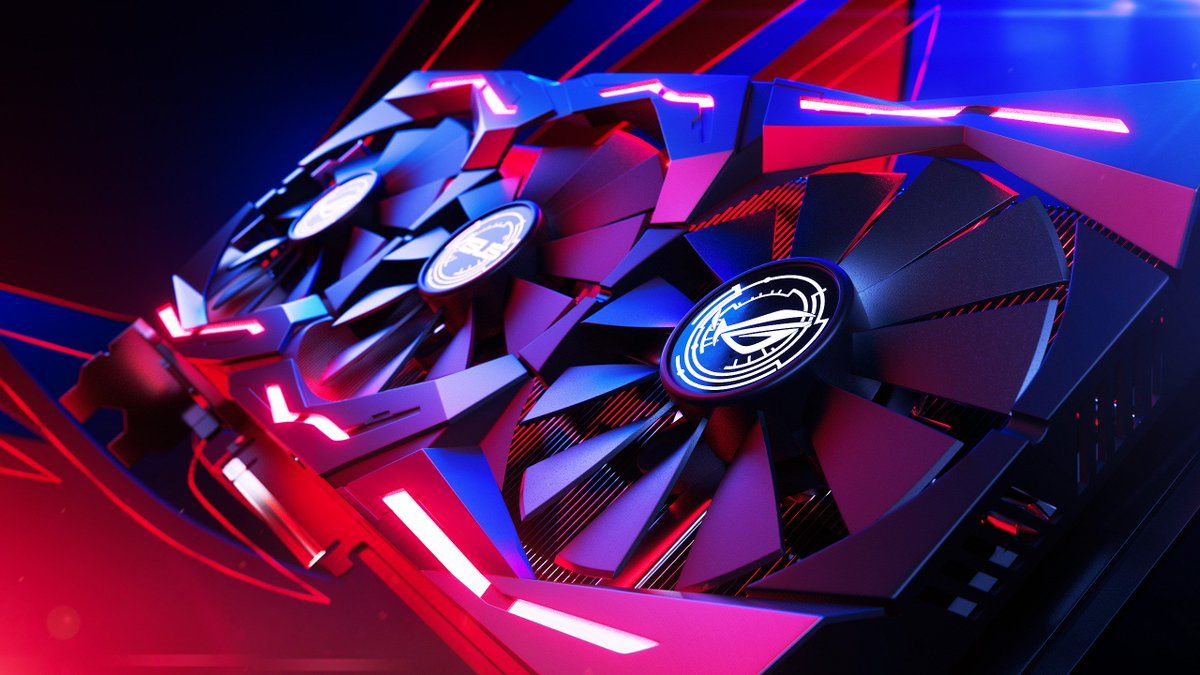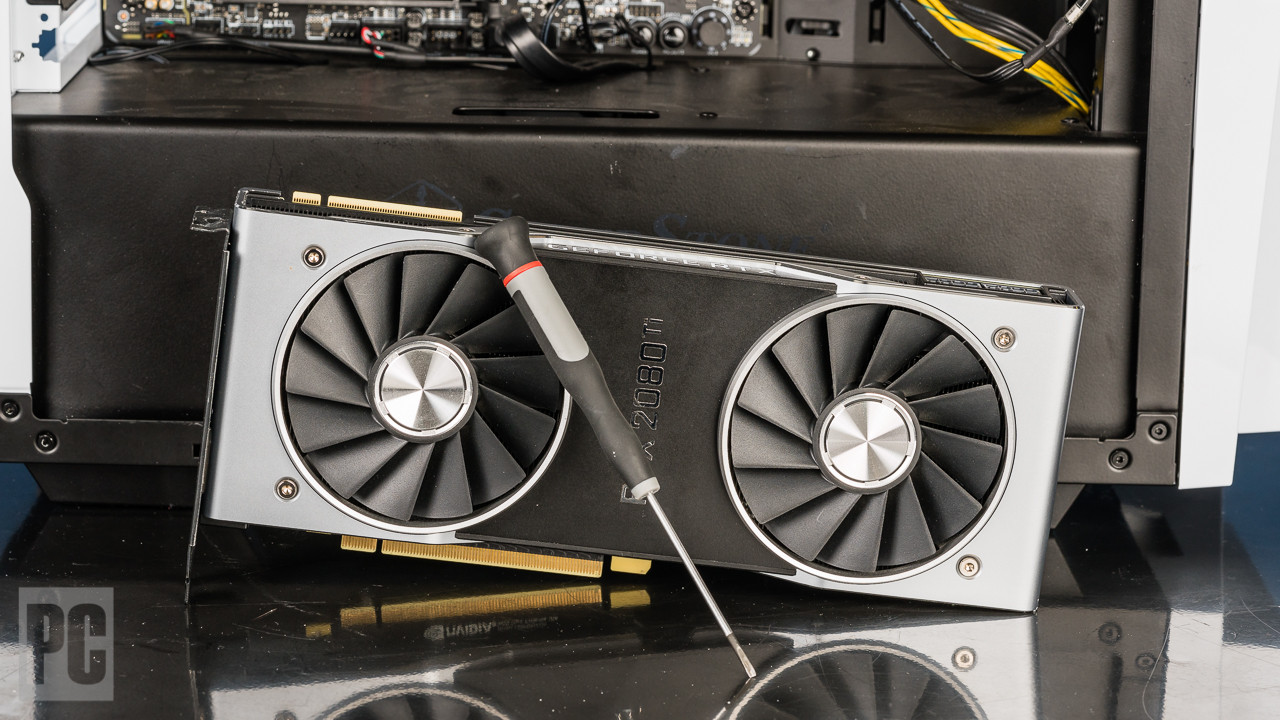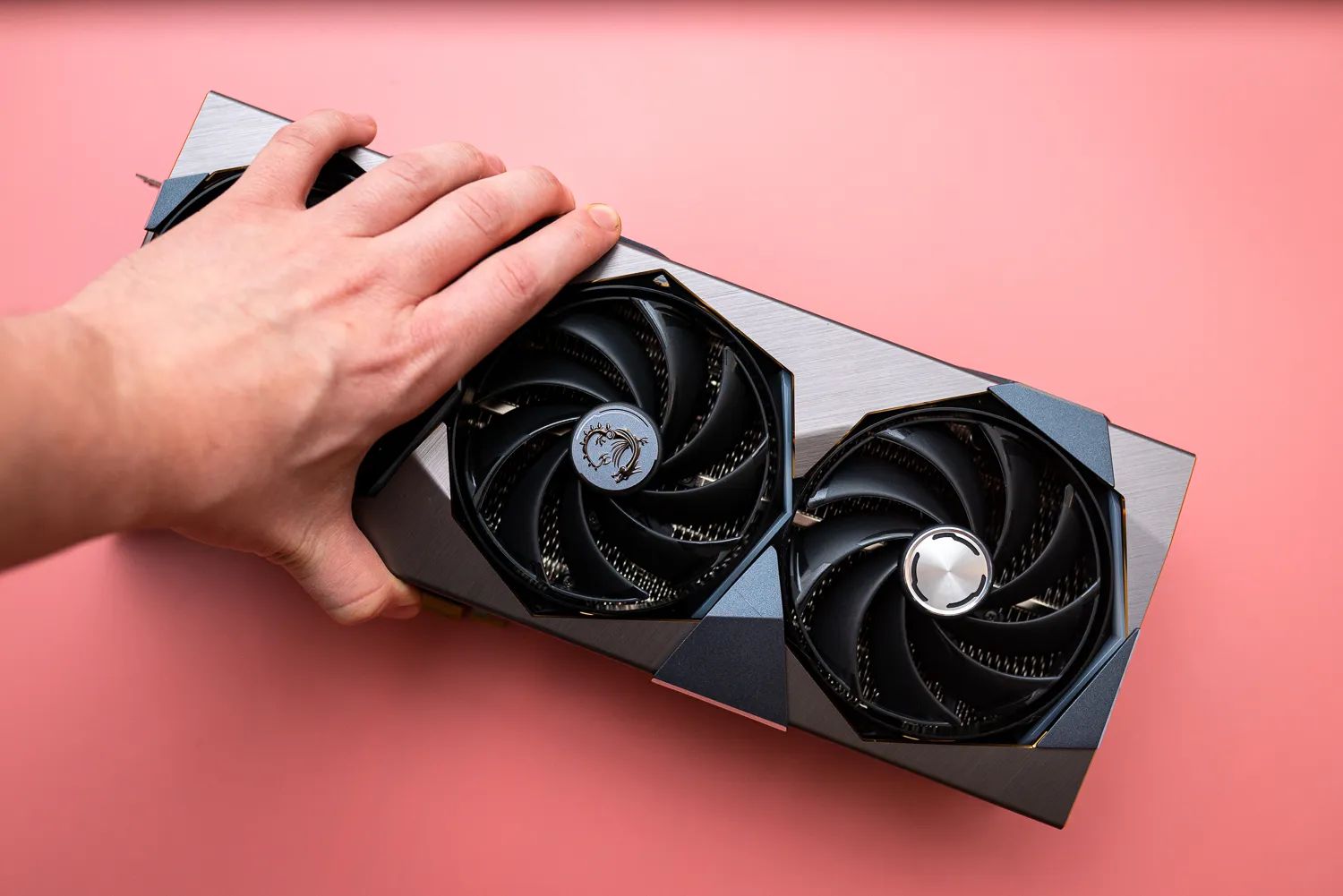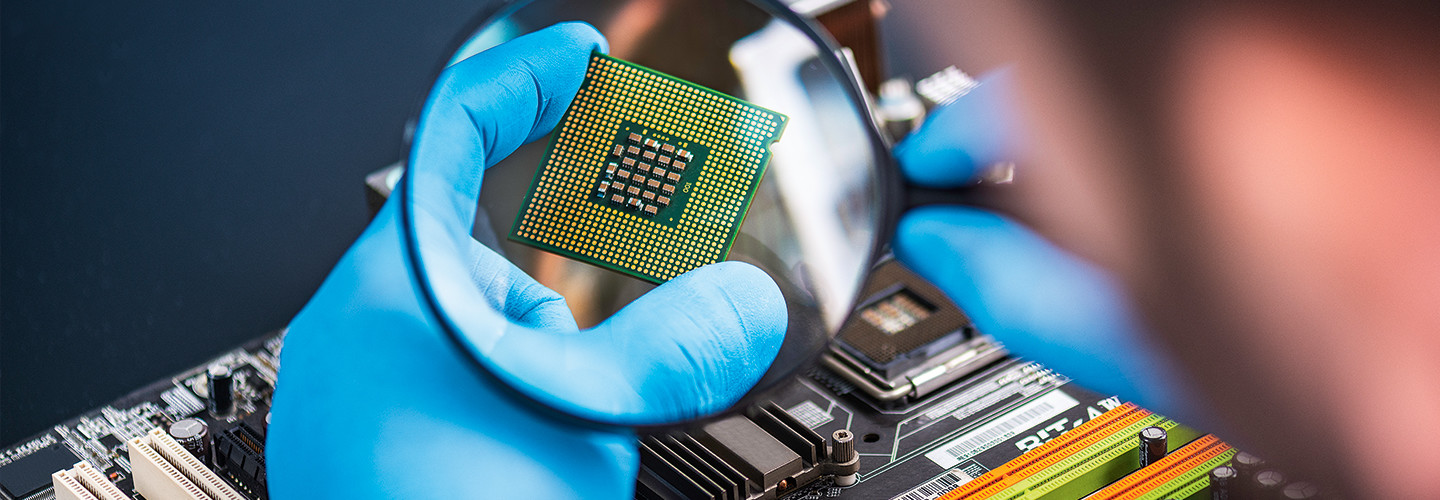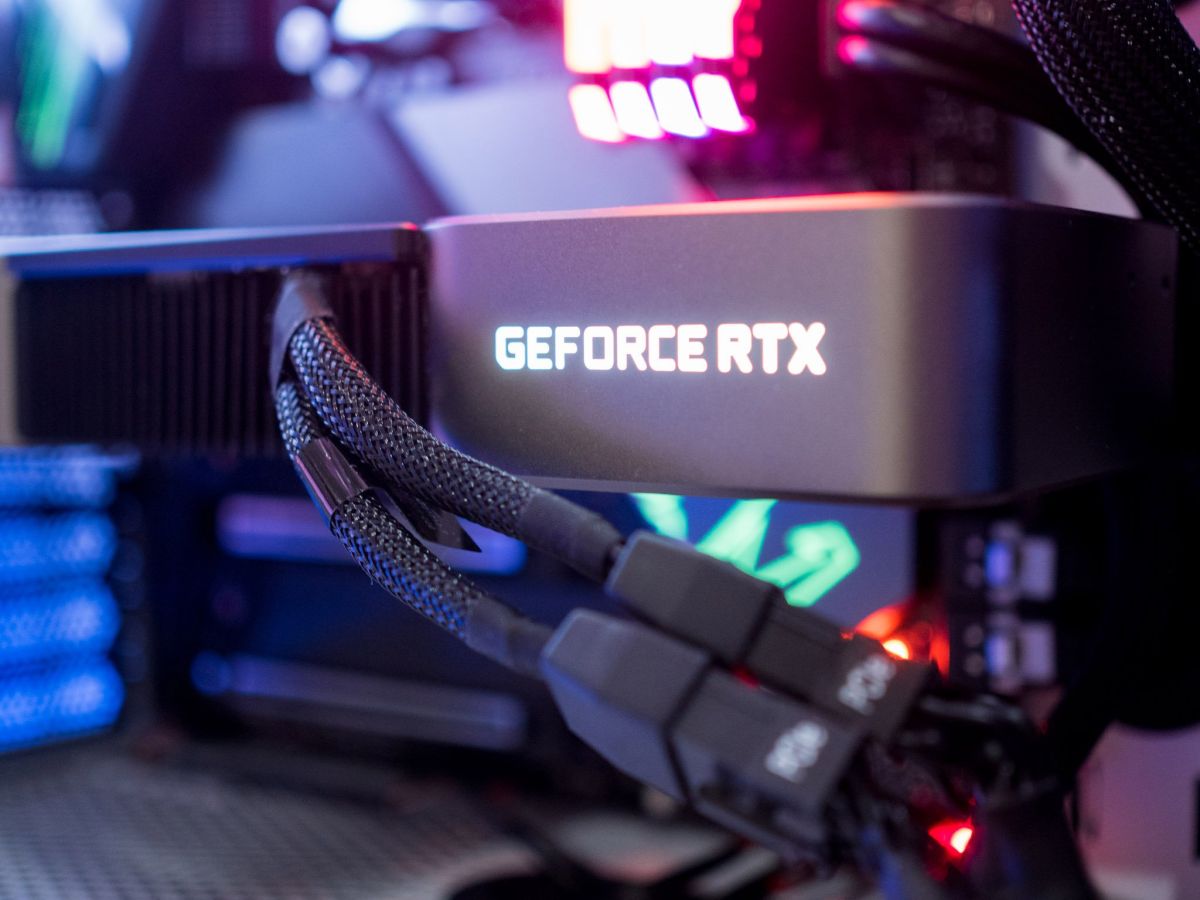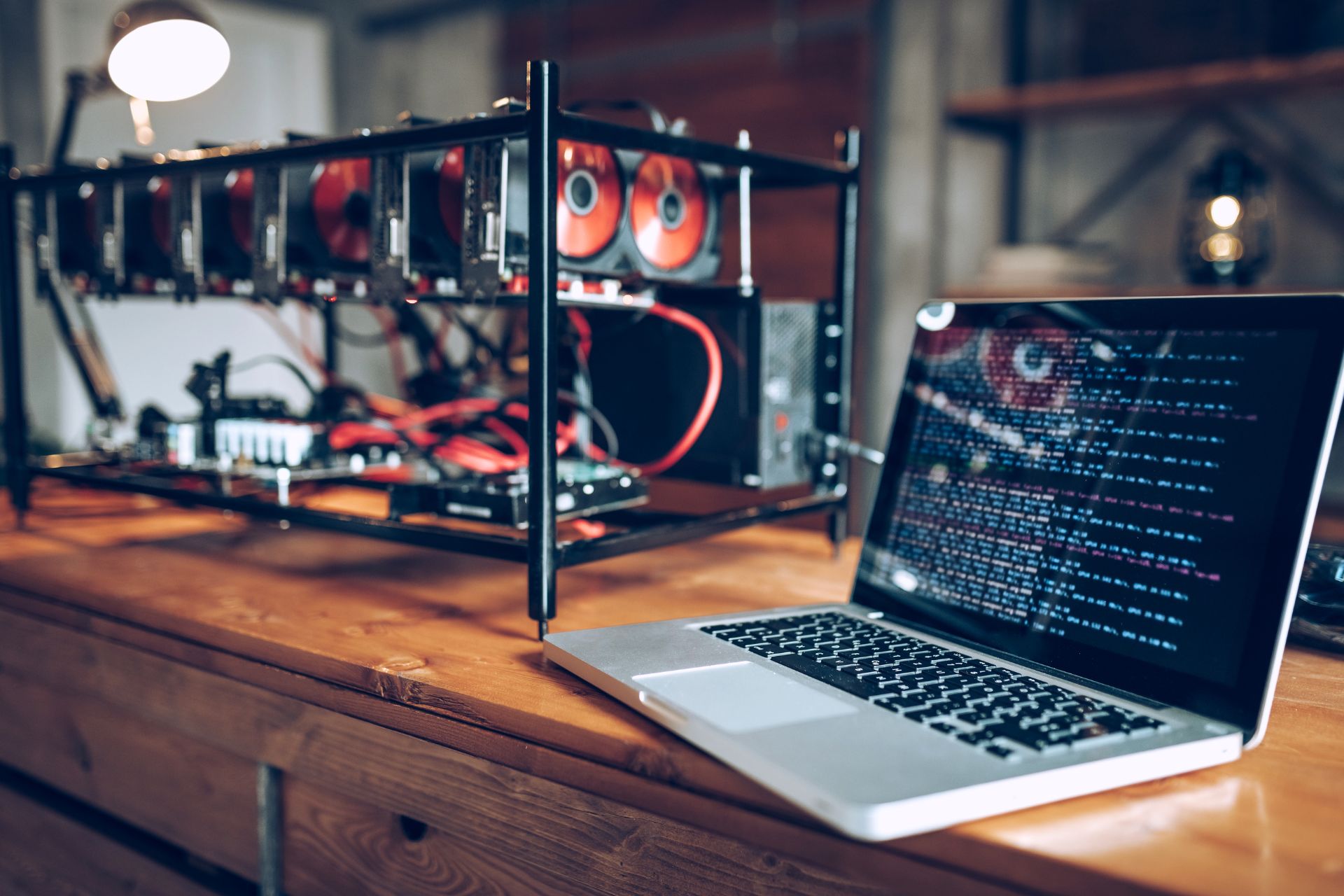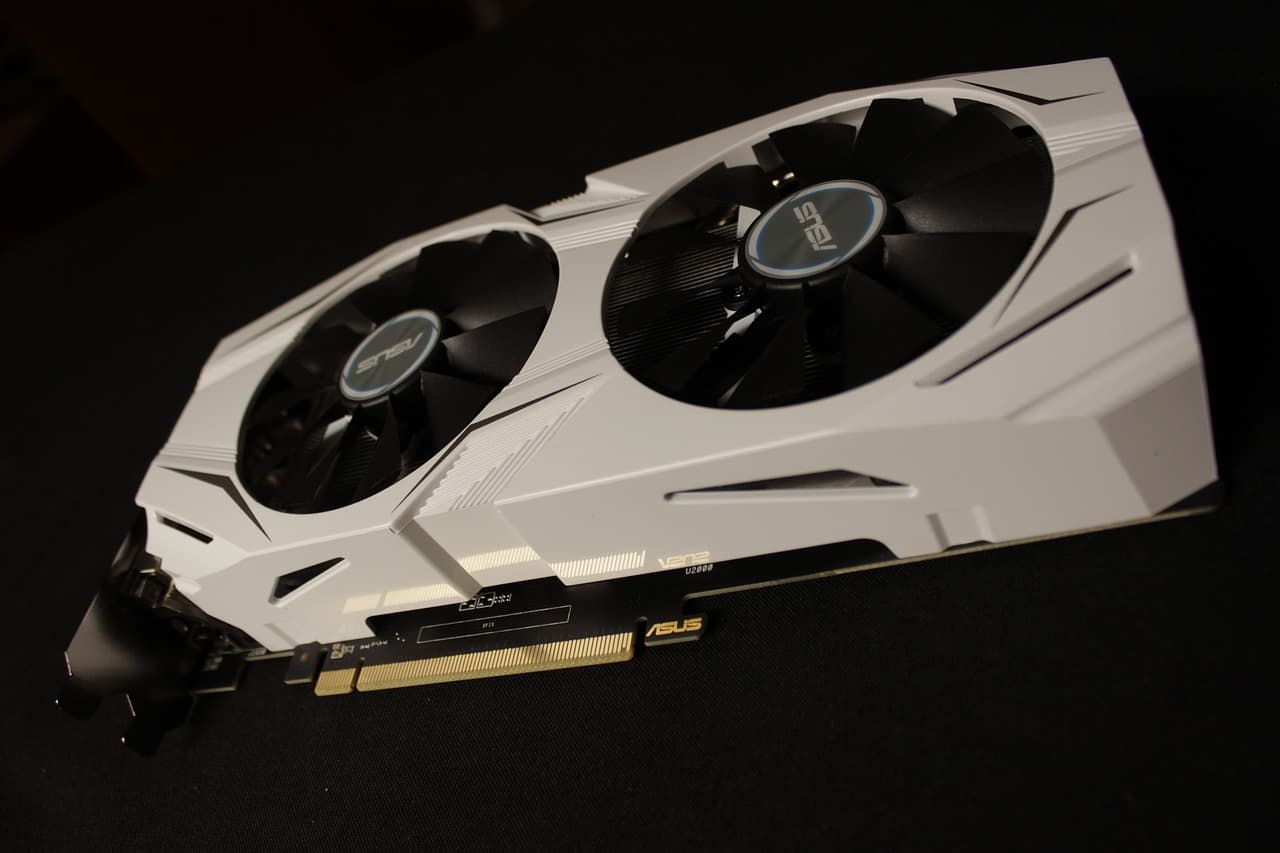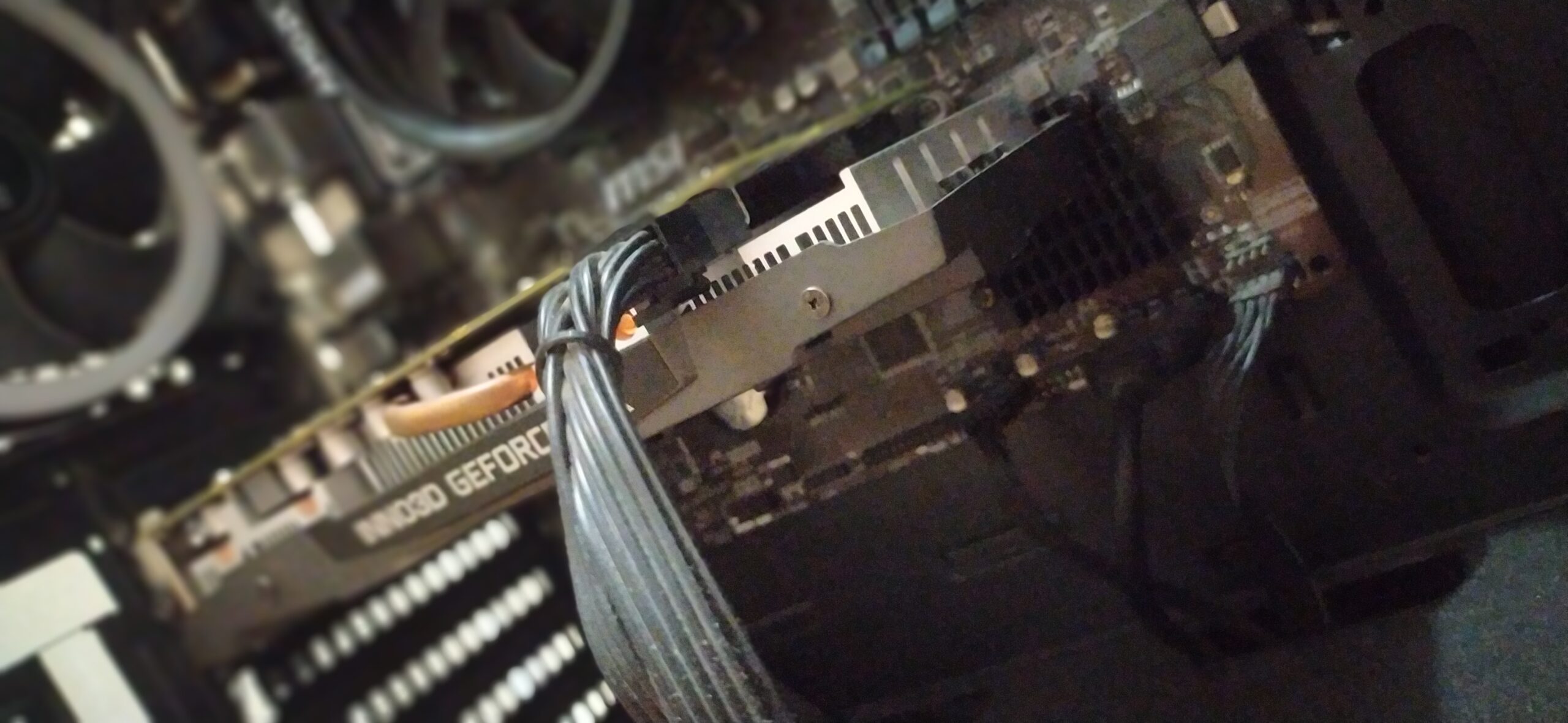Introduction
When it comes to optimizing the performance of your computer for gaming or content creation, the power of your graphics processing unit (GPU) plays a crucial role. The GPU is responsible for rendering images, videos, and animations in real-time, making it a vital component for smooth and immersive experiences in games and graphic-intensive tasks.
Understanding how much power your GPU requires is essential to ensure that it can handle the demands of your chosen applications. In this article, we will delve into the factors to consider when determining GPU power, the minimum requirements for different use cases, and how to assess your GPU power needs effectively.
Whether you’re a passionate gamer looking to achieve high frame rates and stunning visuals or a content creator working with graphics-intensive software, selecting the right GPU power is essential for optimal performance and productivity.
Throughout this article, we’ll explore the recommended power requirements for gaming and content creation and provide insights into how to determine the appropriate GPU power for your specific needs. Additionally, we’ll discuss the concept of overclocking and its impact on GPU power, allowing you to squeeze out even more performance when necessary.
By the end, you’ll have a solid understanding of GPU power and be equipped to make informed decisions when it comes to optimizing your computer’s graphics capabilities. So, let’s dive in and unravel the world of GPU power requirements!
Understanding GPU Power
GPU power refers to the amount of electrical power required to fuel the operations of your graphics card. This power is measured in watts (W) and directly impacts the performance and capabilities of your GPU. Understanding GPU power is vital as it determines how well your graphics card can handle complex tasks, render high-definition graphics, and process large amounts of data efficiently.
The power consumption of a GPU depends on several factors, including the GPU architecture, clock speeds, the number of CUDA cores or stream processors, and the level of graphics and computational performance required. Modern GPUs are designed to strike a balance between power consumption and performance, providing users with optimal efficiency and output.
The power consumption of a GPU can vary significantly between models and manufacturers. High-end graphics cards generally require more power since they are designed for demanding applications such as gaming, 3D modeling, and video editing. On the other hand, entry-level or mid-range GPUs typically have lower power requirements, making them suitable for casual gaming or less demanding tasks.
It’s important to note that GPU power consumption is not constant and can fluctuate based on the workload. For example, during intense gaming sessions or complex rendering tasks, the GPU power usage may spike, but it will decrease when the system is idle or performing less demanding operations. This dynamic power consumption ensures that the GPU operates efficiently and optimizes power usage when it’s not under heavy load.
In addition to the power consumed by the GPU itself, you should also consider the power requirements for the rest of your system, including the CPU, RAM, storage devices, and any other peripherals. Ensuring that your power supply unit (PSU) can provide sufficient power to all components is crucial to avoid system instability and potential damage to your hardware.
Understanding the power requirements of your GPU is essential for making informed decisions when building or upgrading your computer system. By considering factors such as GPU architecture, performance requirements, and overall power consumption, you can select a graphics card and power supply combination that delivers the optimal balance of performance, efficiency, and stability.
Factors to Consider When Determining GPU Power
Determining the appropriate power for your GPU involves considering various factors that influence its performance and power requirements. By taking these factors into account, you can select a graphics card that meets your needs without overpaying for excessive power or risking underperformance. Here are some essential factors to consider when determining GPU power:
1. Workload: The type of tasks you primarily perform on your computer significantly impacts the GPU power required. Gaming, content creation, 3D modeling, and video editing are all GPU-intensive tasks that demand more power to deliver smooth and optimal performance.
2. Resolution and Refresh Rate: Higher resolutions, such as 4K or ultra-wide monitors, and higher refresh rates require more GPU power to render and display images smoothly. Ensure that your chosen graphics card can handle the resolution and refresh rate of your desired setup.
3. Software Requirements: Different software applications have varying GPU power requirements. Video editing software, for instance, may utilize GPU acceleration for faster rendering, which requires a more powerful graphics card.
4. Multi-Monitor Setup: If you plan to use multiple monitors simultaneously, you may need a more powerful GPU to handle the increased workload and additional display outputs.
5. Future-proofing: Consider your future needs and anticipated advancements in software and technology. Investing in a slightly more powerful GPU may provide better longevity and ensure compatibility with upcoming software and games.
6. Budget: The price of graphics cards increases with their performance capabilities. It’s essential to find a balance between your desired performance and your budgetary constraints.
7. Power Supply Unit (PSU) Capacity: Check the specifications of your power supply unit to ensure it can deliver sufficient power to the GPU. An inadequate power supply can lead to system instability or prevent the GPU from operating at its full potential.
Remember that determining GPU power is not solely based on a single factor. It requires considering your specific requirements, taking into account the workload, display resolution, software needs, and other factors relevant to your usage. By carefully considering these factors, you can make an informed decision when selecting a GPU that provides the ideal balance of performance, power efficiency, and cost-effectiveness for your needs.
Minimum GPU Power Requirements
The minimum GPU power requirements for your system depend on the tasks you plan to undertake and the specifications of the software you intend to use. While the exact power requirements can vary, there are general guidelines to consider when determining the minimum GPU power for your needs.
For casual gaming or basic multimedia tasks, a graphics card with a power range of 300-500 watts should suffice. These entry-level graphics cards are designed to handle less demanding games and applications while consuming relatively low power.
If you’re into more graphics-intensive gaming or working with moderately complex content creation software, consider a mid-range GPU with a power range of 500-750 watts. These GPUs offer better performance and power efficiency and can handle most modern games and graphic-intensive applications.
For hardcore gamers, professional 3D modelers, or video editors, a high-end graphics card with a power range of 750-1000 watts or beyond may be necessary. These GPUs provide top-tier performance and can handle the most demanding games, virtual reality (VR) experiences, and resource-intensive software.
It’s important to note that while the power requirements increase with the performance level of the GPU, it’s not always necessary to pick the most powerful option available. Consider your specific usage requirements and budget constraints to strike the right balance between performance and affordability.
Remember that the minimum GPU power requirements also depend on the rest of your system’s components. Ensure that your power supply unit (PSU) can deliver adequate power to all components, including the GPU, to prevent stability issues and potential system damage.
Consult the specifications and recommendations provided by the GPU manufacturer to determine the minimum power requirements for a particular graphics card model. These guidelines should be considered as a starting point when determining the minimum GPU power needed for your system.
Ultimately, it’s crucial to choose a GPU with a power rating that aligns with your intended usage and provides sufficient headroom for future upgrades and advancements in software technology. By considering the minimum GPU power requirements outlined here and your specific usage needs, you can select a graphics card that meets your expectations and ensures a smooth and enjoyable computing experience.
Recommended GPU Power for Gaming
When it comes to gaming, having a powerful GPU is crucial to achieve smooth gameplay, high frame rates, and stunning visuals. The recommended GPU power for gaming depends on several factors, including the resolution you’re gaming at, the level of graphics detail you desire, and the specific games you play.
For gaming at 1080p resolution, a mid-range graphics card with a power range of 500-750 watts should be sufficient to handle most modern games at high graphics settings. This level of performance ensures smooth gameplay and excellent visuals for most mainstream gamers.
If you’re gaming at higher resolutions such as 1440p or 4K, consider a high-end graphics card with a power range of 750-1000 watts or more. These GPUs deliver the performance required to run games at these resolutions with high graphics settings and maintain smooth frame rates.
It’s important to note that the GPU power recommendations may vary depending on the specific games you play. Some games are more demanding on the GPU than others, and certain genres, such as first-person shooters or open-world games, may require more GPU power to handle complex environments and detailed graphics.
Another factor to consider is future-proofing. If you want to ensure that your GPU remains capable of handling upcoming games, it’s advisable to opt for a more powerful graphics card that exceeds the current recommended specifications. This allows you to enjoy your games at high settings and maintain a smooth gaming experience for a more extended period.
Additionally, consider the power efficiency of the GPU. Higher-end graphics cards tend to consume more power to deliver their impressive performance. If power consumption and energy efficiency are important to you, explore options that offer a good balance between power and efficiency, such as GPUs with improved architecture and advanced power management features.
Lastly, keep in mind that a powerful GPU also needs a suitable power supply unit (PSU) to deliver the necessary power. Verify that your chosen PSU can accommodate the power requirements of your selected GPU to ensure stable and reliable operation.
By considering factors such as resolution, graphics settings, specific game demands, future-proofing, and energy efficiency, you can determine the recommended GPU power for your gaming needs. Investing in a graphics card that aligns with these recommendations will enhance your gaming experience, allowing you to enjoy visually stunning games with smooth performance.
Recommended GPU Power for Content Creation
Content creation tasks such as video editing, 3D modeling, animation, and graphic design require a powerful GPU to handle complex calculations, rendering, and real-time previews. The recommended GPU power for content creation depends on the specific software applications you use and the complexity of your projects.
For entry-level content creation tasks or working with less demanding software, a mid-range graphics card with a power range of 500-750 watts should suffice. These GPUs offer decent performance and power efficiency for tasks like basic video editing, graphic design, and entry-level 3D modeling.
If you’re engaged in more advanced content creation activities, such as high-resolution video editing, complex 3D rendering, or working with professional graphic design software, consider a high-end graphics card with a power range of 750-1000 watts or beyond. These GPUs provide the performance required for smooth real-time previews and quicker rendering times.
When selecting a GPU for content creation, it’s essential to consider the specific software requirements. Some applications, like Adobe Premiere Pro or Autodesk Maya, can utilize GPU acceleration to enhance performance and reduce rendering times. Check the software specifications and requirements to ensure compatibility with your chosen graphics card.
Additionally, the amount of VRAM (Video Random Access Memory) on the GPU can impact content creation performance. Content creation tasks often involve working with larger file sizes and complex visual elements, so having a graphics card with an ample amount of VRAM is beneficial. Aim for GPUs with 4GB or more VRAM for smoother handling of high-resolution textures and large project files.
To future-proof your content creation setup, consider opting for a graphics card that exceeds the current recommended specifications. This allows for better performance and longevity as software and file sizes continue to grow in complexity.
Finally, ensure that your power supply unit (PSU) can handle the power requirements of your chosen GPU. Content creation tasks can be demanding on both the GPU and the CPU, so having a reliable and adequately powered PSU is crucial for stability and performance.
By carefully considering the software requirements, level of complexity in your projects, VRAM needs, and future-proofing considerations, you can select a GPU with the recommended power for content creation. A powerful graphics card will help accelerate your workflow, reduce rendering times, and provide a smooth and efficient experience when working with demanding content creation software.
How to Determine Your GPU Power Needs
Determining your GPU power needs involves assessing your specific requirements, considering factors such as the tasks you perform, the software you use, and the desired level of performance. By following these steps, you can accurately determine the GPU power requirements for your system:
1. Identify your use case: Determine the main tasks you will be performing on your computer. Are you primarily a gamer, content creator, or do you have a mix of both gaming and content creation needs?
2. Research software requirements: Investigate the minimum and recommended specifications for the software applications you use. Software developers often provide guidelines for the graphics card requirements to ensure optimal performance and compatibility.
3. Determine resolution and graphics settings: Consider the resolution at which you typically work or game, as well as the graphics settings you prefer. Higher resolutions and higher graphics settings require more GPU power to deliver smooth and visually pleasing experiences.
4. Consider future needs: Anticipate potential advancements in software technology or changes in your usage requirements. If you plan to upgrade your software or engage in more demanding tasks in the future, it may be worth investing in a more powerful GPU to ensure longevity and compatibility.
5. Consult GPU manufacturer specifications: Visit the website of the graphics card manufacturer and review the specifications and recommendations for their GPU models. This information can provide a baseline for understanding the power requirements of different graphics cards.
6. Verify power supply unit (PSU) capacity: Check the specifications of your power supply unit to ensure it can provide sufficient power to the GPU and other components in your system. A reliable and adequately powered PSU is crucial to prevent system instability or damage to your hardware.
7. Consider power efficiency: Take into account the energy efficiency of the GPU. Newer GPU architectures often offer improved efficiency, allowing for better performance with lower power consumption. This not only helps reduce energy costs but also decreases heat output and noise levels.
By combining these steps, you can accurately determine your GPU power needs. Remember to strike a balance between your specific usage requirements, software recommendations, desired performance level, and budget constraints. It’s important to select a GPU that meets your needs without overpaying for excessive power or risking underperformance.
Overclocking Your GPU
Overclocking your GPU is the process of increasing its clock speed beyond the factory-set specifications. This technique can provide higher performance and improved frame rates in games, as well as faster rendering times in content creation tasks. However, it’s important to note that overclocking pushes the GPU beyond its designed limits and can void warranties if not done properly. Here are some key considerations when overclocking your GPU:
1. Understand the risks: Overclocking your GPU can potentially generate more heat and put additional stress on the components. This may lead to system instability, crashes, or even permanent damage if not done correctly. It’s crucial to be aware of the risks and proceed with caution.
2. Research your specific GPU: Different GPUs have different overclocking potential and tolerances. Research your specific graphics card model and read up on overclocking experiences and techniques used by others to gather valuable insights and guidance.
3. Use reliable overclocking software: There are several trustworthy overclocking software tools available, often provided by the GPU manufacturers or third-party developers. These tools allow you to adjust clock speeds, fan curves, and voltage settings to safely overclock your GPU.
4. Start with small increments: When overclocking, start with conservative adjustments and gradually increase the clock speed or voltage. Monitor the performance and stability after each adjustment. This iterative approach allows you to find the optimal balance between performance gains and system stability.
5. Monitor temperatures: Overclocking can increase the GPU’s temperature, so it’s vital to monitor temps with reliable software or hardware monitoring tools. Keep an eye on temperature thresholds and ensure that your GPU remains within safe operating limits.
6. Test stability: After each adjustment, stress test your GPU with software like FurMark or 3DMark to ensure stability. These tests simulate heavy loads and can help identify any instability or graphical artifacts caused by an overclocked GPU.
7. Balance power and heat: Increasing clock speeds usually requires more power, which can result in higher heat output. Ensure that your power supply and cooling solution can accommodate the additional power demand and dissipate the extra heat generated during overclocking.
Remember that not all GPUs are created equal, even within the same model. The overclocking potential varies depending on factors such as the silicon lottery and the GPU’s cooling solution. Some GPUs may achieve higher overclocks than others, even within the same model series.
Lastly, it’s important to note that overclocking may void warranties, as it involves pushing the GPU beyond its intended specifications. Check your GPU manufacturer’s warranty policies before proceeding with overclocking, and understand the potential implications.
Overclocking your GPU can provide a performance boost for gaming and content creation tasks, but it comes with inherent risks. If you’re unsure or uncomfortable with the process, it’s best to stick with the default clock speeds and enjoy the stable performance provided by your graphics card.
Conclusion
Determining the appropriate GPU power for your needs is crucial for optimizing your computer’s performance in gaming and content creation. By understanding the factors that influence GPU power requirements, you can make informed decisions when selecting a graphics card that aligns with your specific usage needs and budgetary constraints.
Consider factors such as the workload, resolution, graphics settings, and software requirements when determining GPU power. Whether you’re a gamer seeking smooth gameplay and stunning visuals or a content creator working on complex projects, selecting the right GPU power is vital for achieving optimal performance and productivity.
For gaming, consider the recommended GPU power based on the resolution you game at, the level of graphics detail desired, and the specific games you play. A mid-range GPU may suffice for casual gaming, while a high-end graphics card may be necessary for more demanding games and higher resolutions.
For content creation, the recommended GPU power depends on the complexity of your projects and the software applications you use. High-resolution video editing, 3D rendering, and professional graphic design may require a more powerful GPU to handle the intensive calculations and rendering tasks.
Overclocking your GPU can provide performance gains, but it comes with risks and should be done with caution. Research your specific GPU, use reliable overclocking software, and monitor temps to ensure stability and avoid damage to your hardware. Remember that overclocking can void warranties, so proceed at your own risk.
In conclusion, understanding and determining your GPU power needs is crucial for optimizing your computer’s performance in both gaming and content creation. By considering factors such as workload, resolution, software requirements, and future needs, you can select a graphics card that provides the perfect balance of performance, power efficiency, and affordability. Whether you’re a gamer or a content creator, finding the right GPU power will enhance your computing experience and allow you to unleash the full potential of your system.







